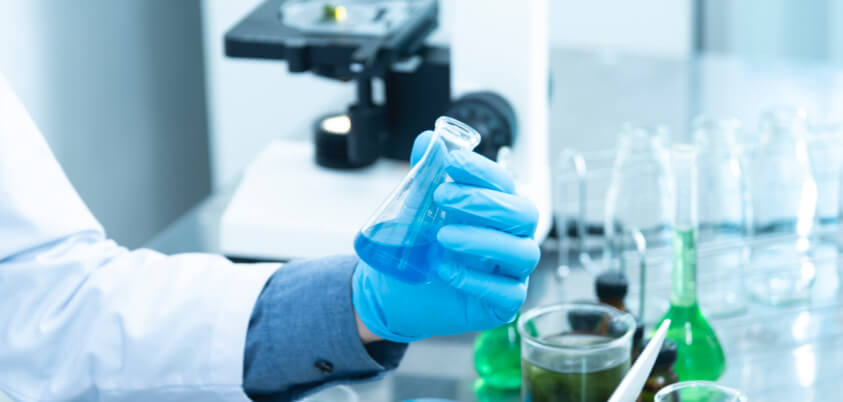Project Description
Overview:
Industrial wastewater is directly discharged into water and other anthropogenic activities causing water pollution [1]. Heavy metal ions are the main pollutants in industrial wastewater, which may seriously disturb the lasting balance of ecosystem activities and endanger human health [2]. For example, heavy metal ions in sewage may cause agricultural soil contamination and affect human health through bioaccumulation.
 Figure 1 Industrial wastewater pollution
Figure 1 Industrial wastewater pollution
Synthetic biology might offer new insights into wastewater treatment. We envisage the use of synthetic biology to construct a heavy metal ion adsorption device, using curli fiber nanostructures to autonomously synthesize metal binding protein (peptide) in E.coli surface.
In addition, we use molecular dynamics simulations, biological pathway modeling and bacterial growth curve modeling with experimental iterations to verify the feasibility and reliability of the experimental results. Combined with experimental and modeling results, we designed a hardware prototype and proposed the concept of a large-scale industrial adsorption device. The engineered bacteria are coated in carriers to complete the blocking, adsorption and recovery of a variety of heavy metal ions in the process of industrial wastewater treatment.
Heavy metal adsorption under experimental condition
Bacterial biofilm proteins are suitable scaffolds for the growth of materials . In particular, bacterial convoluted fibers have excellent adhesion and stability, potential as templates for biological nanomaterials and resistance to harsh environmental conditions[3]. Therefore, we chose it as our main tool for the adsorption of heavy metal ions.
CsgA is a protein that assembles curli fibers on E. coli membranes. In our design, We fused metallothionein (MT) and different metal binding peptide (MBP) separately to the carboxyl terminus of the CsgA protein, modifying biofilm to achieve heavy metal adsorption
Part A: Metallothionein for heavy metals adsorption

Part B: Metal binding peptide (MBP) for precious metals adsorption

Heavy metal adsorption in actual wastewater treatment
We designed bioreactor to remove industrial effluent from electronics plants. We coated engineered bacteria in Moving Bed Bio Reactor (MBBR) microbial carriers. MBBR carriers provides suitable environment for microorganism attachment and growth due to its increased surface area [4]. We also introduced heavy metal sensor parts in the downstream of adsorption pathway mentioned above, indicating whether the remaining heavy metal ion concentration in the sewage after purification has reached the national discharge standard. We hope to use the research results of this project to contribute to the goal of zero emissions in the industry.
 Figure 2 Process of treating industrial wastewater
Figure 2 Process of treating industrial wastewater
Our design concept
After finding heavy metal ions in wastewater that exceed the national emission standard, we looked for the problem solution. Moving bed biofilm reactor (MBBR) is a highly effective biological water treatment, which has the advantages of cost-efficiency and environment friendly. We got hardware inspiration and determined to modify biofilm to adsorb heavy metal ions in wastewater.
Through literature research, CsgA protein is an important component of biofilm, and Metallothione (MT)/material binding peptide (MBP) can adsorb heavy metal ions in wastewater. We decided to connect csgA and MT/MBP,using biofilm to achieve heavy metal ions adsorption. First, we simulated protein folding and metals binding sites by means of molecular dynamics to demonstrate experiment feasibility. Next, we started the plasmid construction, and the modeling of Isopropyl β-D-1-thiogalactopyranoside (IPTG) addition guided experiment to maximize CsgA-MBP/MT expression.
We conducted E. coli growth curves at different heavy metal concentrations and modeling concluded that E. coli environmental accommodation does not vary with heavy metal ions concentration changes. After that, We conducted experiments on heavy metal ions adsorption. Modeling provided E. coli and carriers input method combined with experimental results. Based on bio-safety concerning, we designed a semi-enclosed hardware for heavy metal adsorption. Modeling guided the bacteria and carriers input so as to discharge heavy metal effluent below national standard.
 Figure 3 The logical chain of the project:blue box represents HP section, green box represents experimental results section, orange box represents modeling section, yellow box represents the hardware section. See the wiki of each section for details
Figure 3 The logical chain of the project:blue box represents HP section, green box represents experimental results section, orange box represents modeling section, yellow box represents the hardware section. See the wiki of each section for details
-
[1] Misra, C.S., Sounderajan, S. & Apte, S.K., 2021. Metal removal by Metallothionein and an acid phosphatase phone, surface-displayed on the cells of the extremophile, Deinococcus Radiodurans. Journal of Hazardous Materials. Available at: https://www.sciencedirect.com/science/article/pii/S0304389421014424 [Accessed August 11, 2022]. ↩︎
-
[2] JJ, K. & YS, K., Heavy metal toxicity: An update of chelating therapeutic strategies. Journal of trace elements in medicine and biology: organ of the Society for Minerals and Trace Elements (GMS). Available at: https://pubmed.ncbi.nlm.nih.gov/31109617/ [Accessed August 11, 2022]. ↩︎
-
[3] T. T. Olmez, E. Sahin Kehribar, M. E. Isilak, T. K. Lu and U. O. S. Seker, ACS Synth. Biol., 2019, 8, 2152–2162. ↩︎
-
[4] A. Barwal and R. Chaudhary, Rev Environ Sci Biotechnol, 2014, 13, 285–299. ↩︎


 Best Environment Nomination!!
Best Environment Nomination!!



